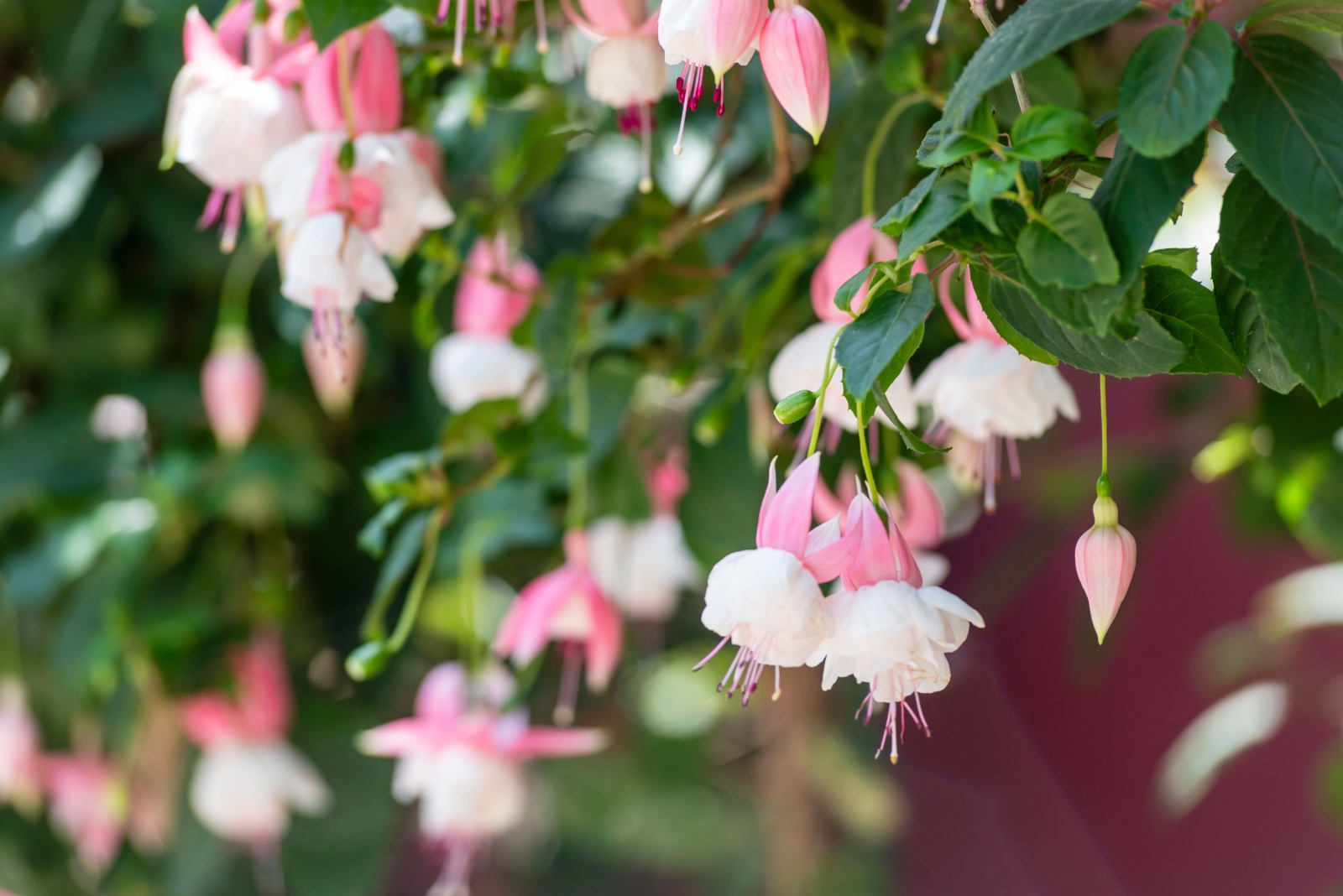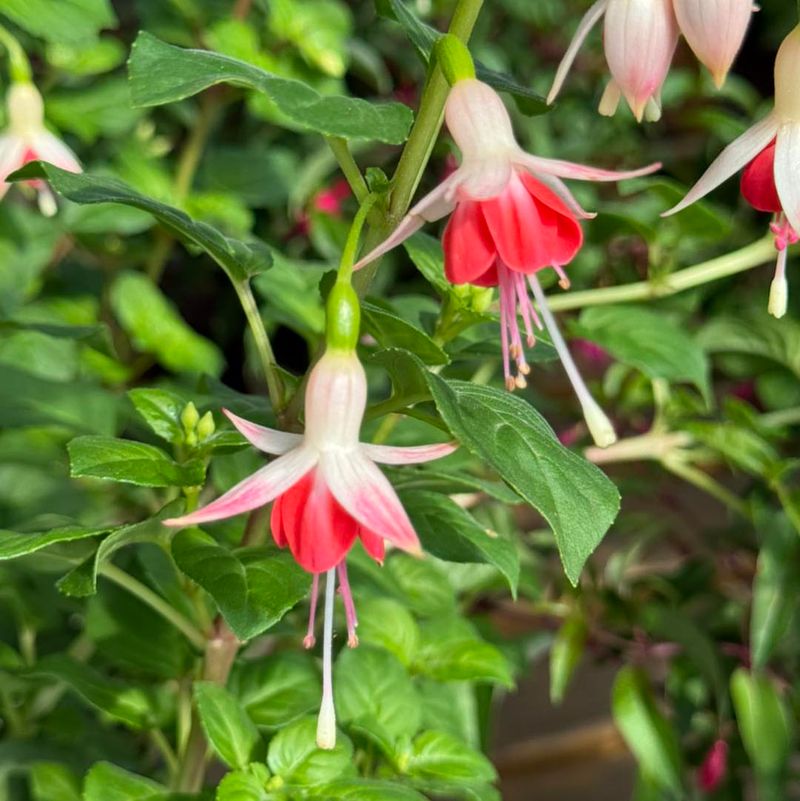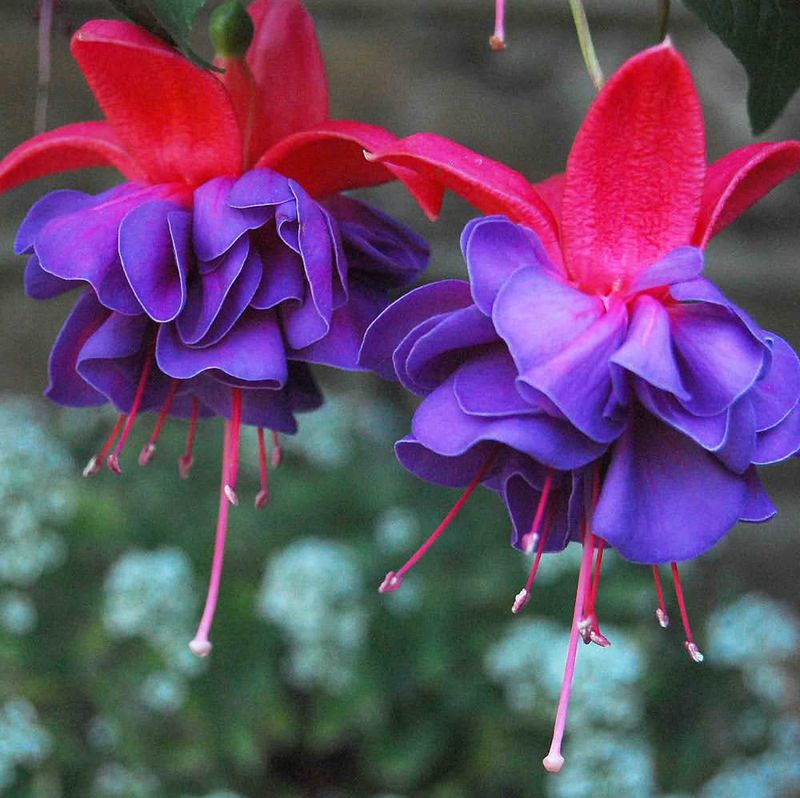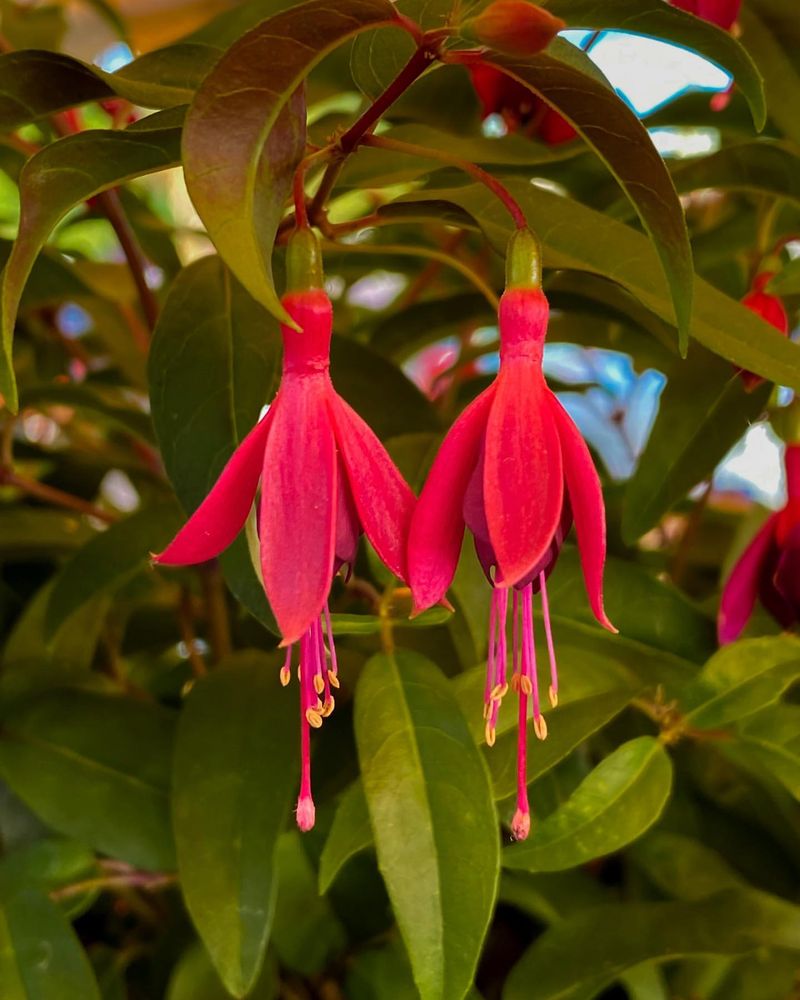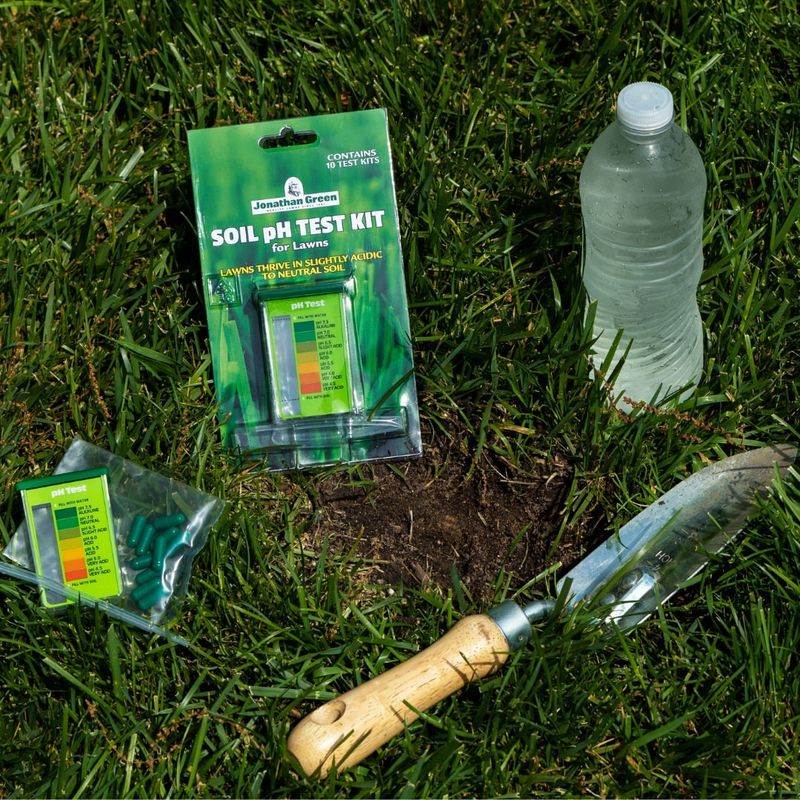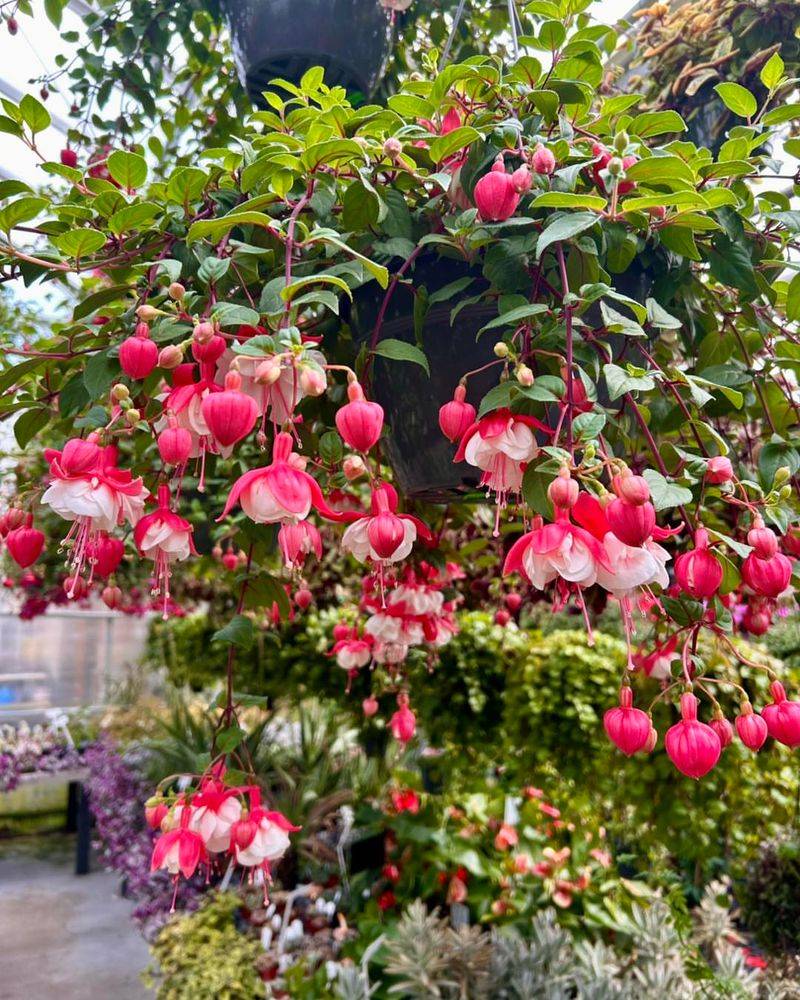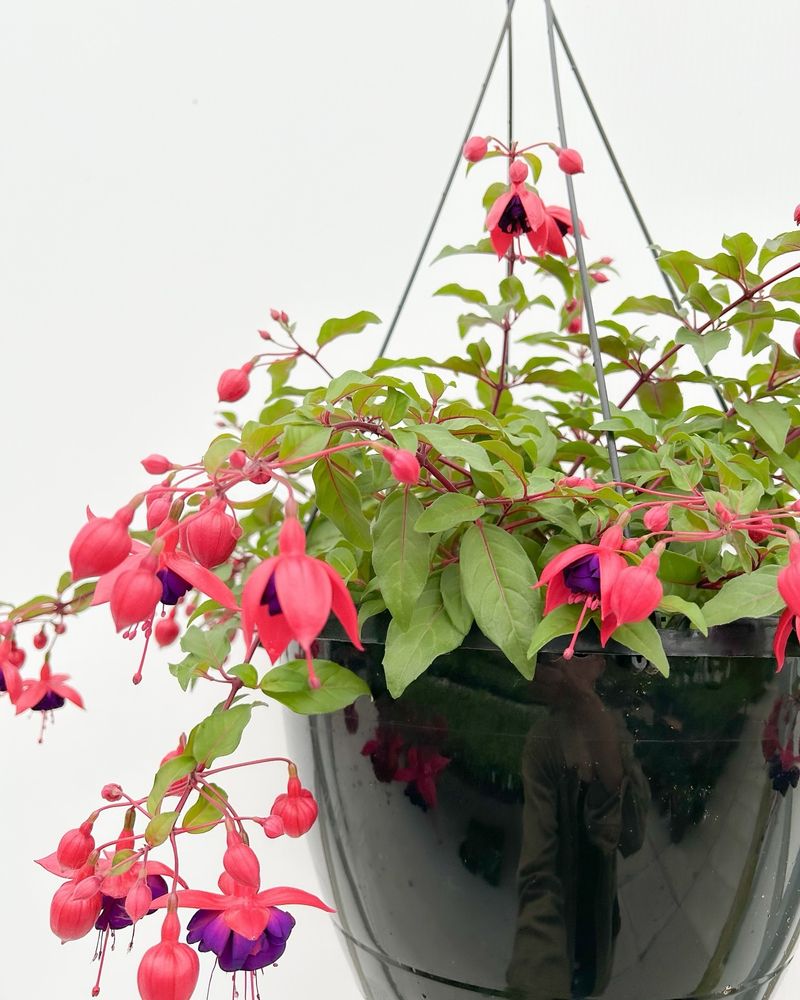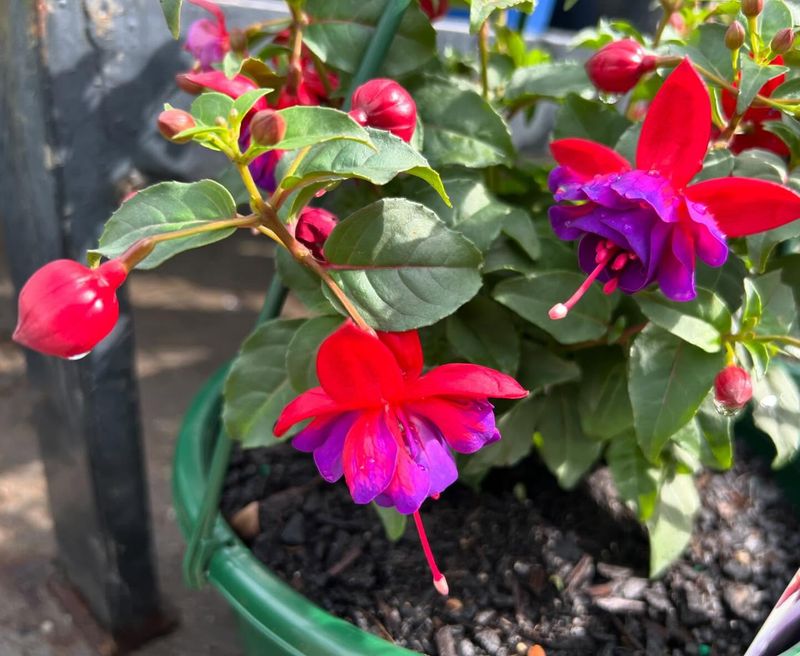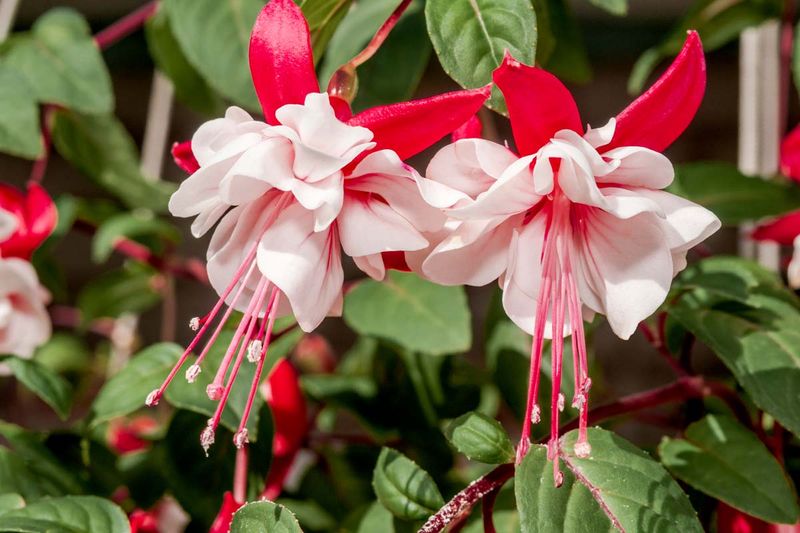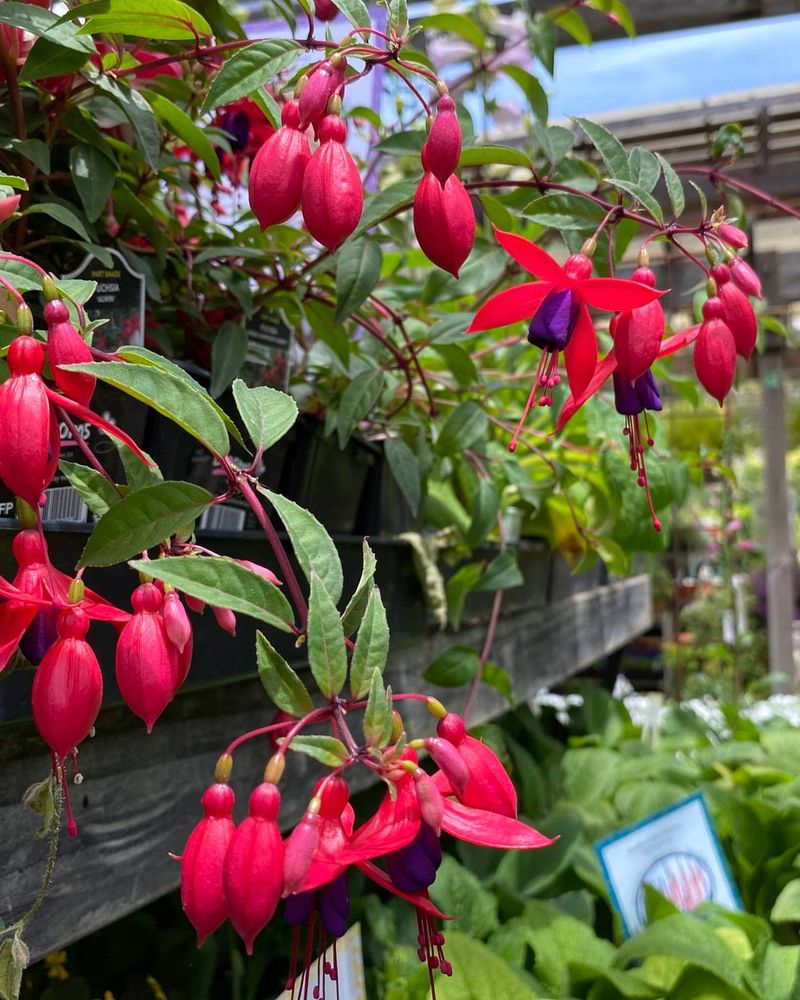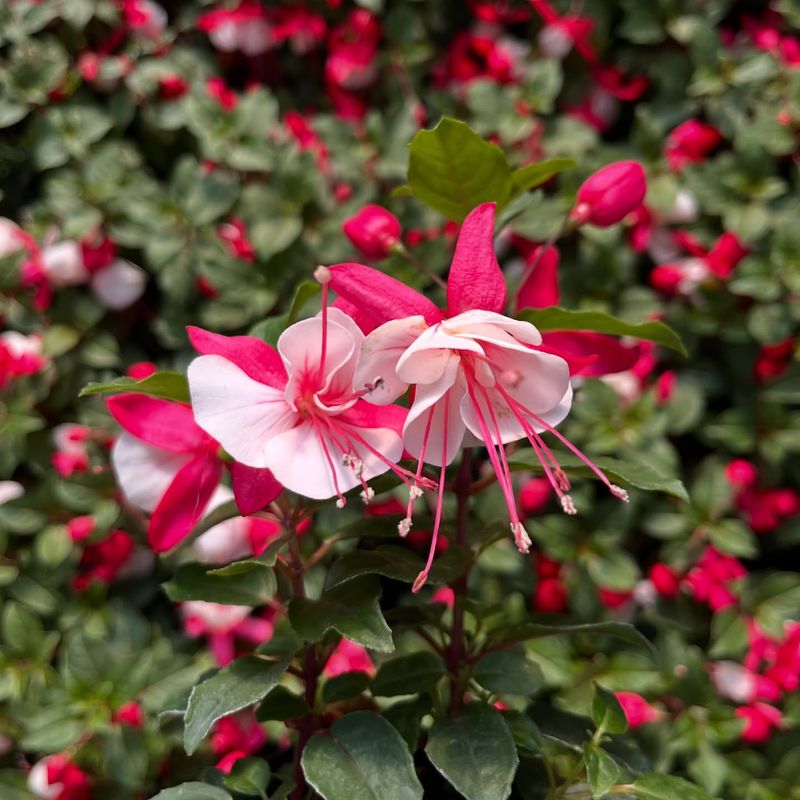Growing beautiful fuchsias in the Pacific Northwest requires special care, especially when it comes to fertilizing. Our region’s unique climate and soil conditions create specific needs for these colorful, dangling flowers.
Understanding when and how to fertilize your fuchsias can make the difference between struggling plants and a garden bursting with vibrant blooms all season long.
1. Timing Is Everything
Wait until after the last frost before applying any fertilizer to your fuchsias. In the Pacific Northwest, this typically means holding off until mid-April or even early May, depending on your specific location.
Fertilizing too early can stimulate tender new growth that might get damaged by late frosts. Most experienced gardeners mark their calendars for Mother’s Day as a safe starting point for fuchsia fertilization.
2. Rain-Friendly Formulas Matter
Our famously wet climate washes away nutrients faster than in drier regions. Slow-release fertilizers work wonderfully for fuchsias here because they provide steady nutrition despite our frequent downpours.
Look for products specifically labeled for acid-loving plants. Many gardeners swear by organic options like fish emulsion or balanced 14-14-14 slow-release granules that won’t burn roots even during our occasional summer dry spells.
3. Less Is More With Nitrogen
Fuchsias grown in too much nitrogen become leafy giants with few flowers. Our naturally rich Northwest soils often contain adequate nitrogen already, so look for fertilizers with lower first numbers in the N-P-K ratio.
A balanced 10-10-10 works well, but some expert growers prefer formulas like 5-10-10 that emphasize phosphorus and potassium over nitrogen. These nutrients promote stronger blooms rather than excessive foliage growth.
4. Soil pH Influences Nutrient Uptake
Fuchsias love slightly acidic soil with pH between 6.0-7.0, which perfectly matches many natural soils in our region. However, if you’re near the coast, your soil might be more alkaline from shell deposits.
Test your soil before fertilizing! Even the perfect fertilizer won’t help if your pH is off. Add coffee grounds or acidic fertilizers if needed to lower pH, which helps fuchsias absorb nutrients properly in our Northwest growing conditions.
5. Container Plants Need Special Attention
Fuchsias in hanging baskets or containers require more frequent fertilizing than those planted in the ground. The limited soil volume and frequent watering needed during our dry summers quickly depletes nutrients.
For potted fuchsias, dilute liquid fertilizer to half-strength and apply every 1-2 weeks during the growing season. Many Northwest gardeners use compost tea as a gentle organic option that won’t build up salts in container soil.
6. Watch For Signs Of Fertilizer Burn
Our region’s cool spring temperatures can slow nutrient absorption, making fuchsias more susceptible to fertilizer burn. Brown leaf edges, wilting despite adequate water, or sudden leaf drop are warning signs.
If you notice these symptoms, immediately flush the soil with plain water. Cut back on fertilizer until the plant recovers. Many Northwest gardeners err on the side of under-fertilizing rather than risking damage to their prized fuchsias.
7. Adjust For Microclimates
The Pacific Northwest contains numerous microclimates that affect how fuchsias process nutrients. Plants in foggy coastal areas need less fertilizer than those in sunnier inland valleys.
Pay attention to your specific location. Gardeners in Seattle might follow different fertilizing schedules than those in Portland or Victoria. Monitor your plants’ response and adjust accordingly – fuchsias growing in part shade typically need less fertilizer than those in brighter spots.
8. Winter Dormancy Means Fertilizer Break
Unlike warmer regions, our Northwest fuchsias need a complete fertilizer break during winter dormancy. Stop all feeding by early September to help plants harden off before first frost.
This timing allows stems to toughen up and prepare for winter. Continuing fertilizer too late promotes tender growth that won’t survive our cold season. Many successful growers mark Labor Day as their cutoff date for feeding fuchsias in our region.
9. Organic Options Support Local Ecosystems
Chemical fertilizers can harm our region’s sensitive watershed systems. Organic alternatives like worm castings, compost tea, or fish emulsion provide excellent nutrition while protecting our Northwest environment.
Many local nurseries offer region-specific organic blends formulated for our native soils. These gentler options release nutrients slowly, reducing runoff concerns during our rainy season while still providing everything fuchsias need to thrive in our unique growing conditions.
10. Track Your Results With Photos
Our variable Northwest weather makes consistent fertilizing challenging. Smart gardeners keep records of what works best for their specific location and conditions.
Take monthly photos of your fuchsias and note fertilizing dates and products used. This visual diary helps identify which methods produce the best blooms in your particular microclimate. Over time, you’ll develop a customized feeding schedule that accounts for our region’s unique growing patterns.

